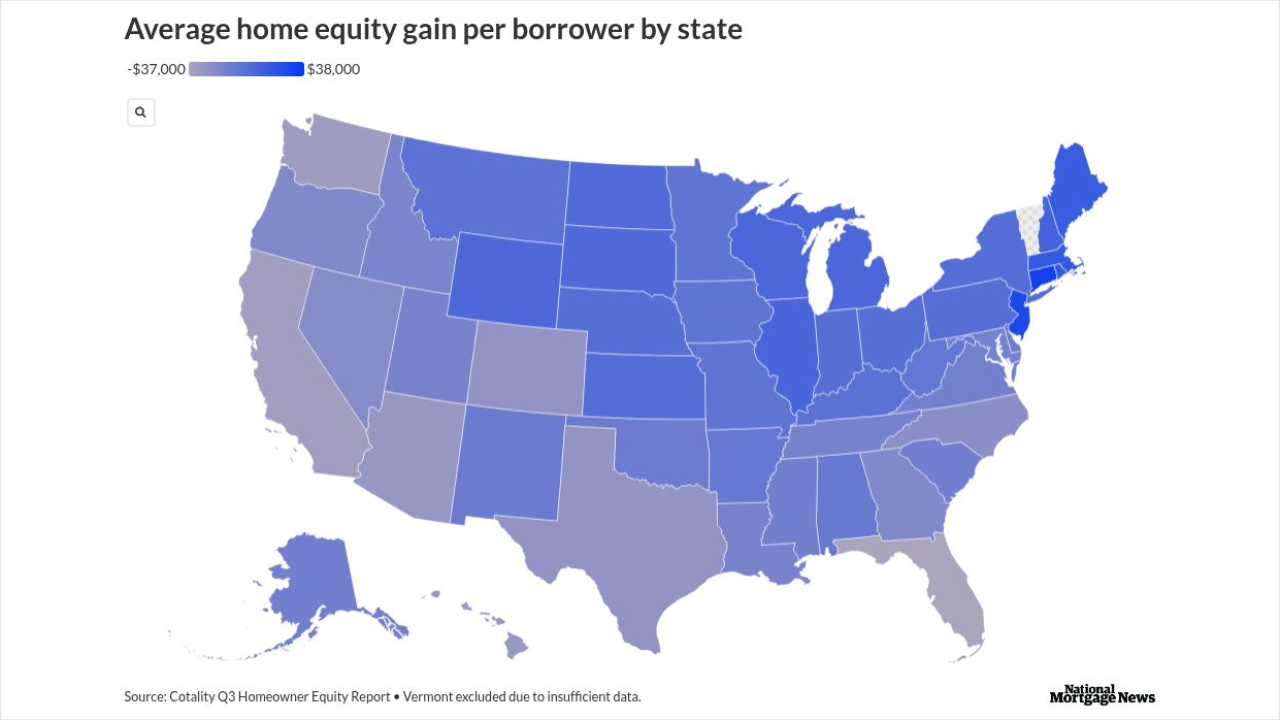The Mortgage Bankers Association now expects the 30-year fixed to average 7% during the current quarter, but is also predicting slightly higher total originations compared to their predictions from a month ago.
Since President Trump's tariff announcement, mortgage rates have been volatile, as has the benchmark 10-year Treasury.
On April 11, the 30-year fixed as measured by data from Optimal Blue was at 6.895%, up from 6.481% one week prior. But over the next two business days, the rate did slip back down to 6.78%.
Other trackers had the
For rates to average 7% for the current period means they would have to be above that mark for some time during the quarter.
Opportunity for refis remains
"The jump in interest rate volatility has caused wider spreads, notably for mortgage-Treasury spreads," said a commentary from Mike Fratantoni and Joel Kan, the group's chief and deputy chief economists.
But despite that volatility, "we still expect that there will be moments of refinance opportunity, which will lead to somewhat higher refinance volume this year relative to our last forecast." the report stated.
But the MBA also cut their outlook for purchase volume. The April forecast calls for $2.08 trillion in total volume,
Purchase production is now expected to end the year at $1.38 trillion, down from $1.4 trillion in its last outlook. It is still up from $1.29 trillion for 2024.
As for refis, the April forecast calls for $693 billion, compared with $663 billion predicted one month ago.
Next year, the MBA forecast $2.36 trillion in originations, consisting of $1.56 trillion of purchase and $797 billion of refi. This is a reduction from March, when the outlook was for $2.37 trillion, with purchase making up $1.61 trillion and refi contributing $757 billion.
Inflation and stagflation influence the forecasts
"Significant policy uncertainty has increased market volatility, as investors work to peer through the fog to assess the net impact of a swirl of ever-changing tariff pronouncements," Fratantoni and Kan said. "The likely impact of the evolving trade war will be to sharply slow economic growth and raise prices, a move towards stagflation."
Meanwhile, 63% of the economists surveyed by Wolters Kluwer said it is probable that the U.S. experiences "stagflation-lite" over the next 12 months. It defined it as a period of rising inflation and below-trend gross domestic product growth.
The survey also found 70% of the economists now expect inflation readings to turn up significantly in the next six months, up from 50% in the March report.
When asked how the tariffs would impact inflation, 51% expect just a one-time increase in prices, but 49% expect it to be lasting on the economy.
U.S. economic growth slows
The consensus from the April Wolters Kluwer survey is GDP growth of 1.9% this year.
"With our April forecast, we have reduced expected economic growth by almost a percentage point to 0.3% for the full year and increased our forecast for inflation by almost 2 percentage points, with an expectation that it will peak at 4% by the end of 2025," the MBA economists said in their commentary.
Fratantoni and Kan expect the Federal Open Market Committee to "be on hold" in the first half of the year when it comes to short-term rate cuts. It believes it will reduce rates three times in the second half of the year.
On the other hand, the Wolters Kluwer survey found 2% of economists expect the next cut at the May meeting and 44% in June. But 12% think the FOMC won't act until July and 41% said it was even later. In its February BCEI,
The average among those surveyed is for the Fed to cut rates 65 basis points this year, a more aggressive target than the 42% last month.




